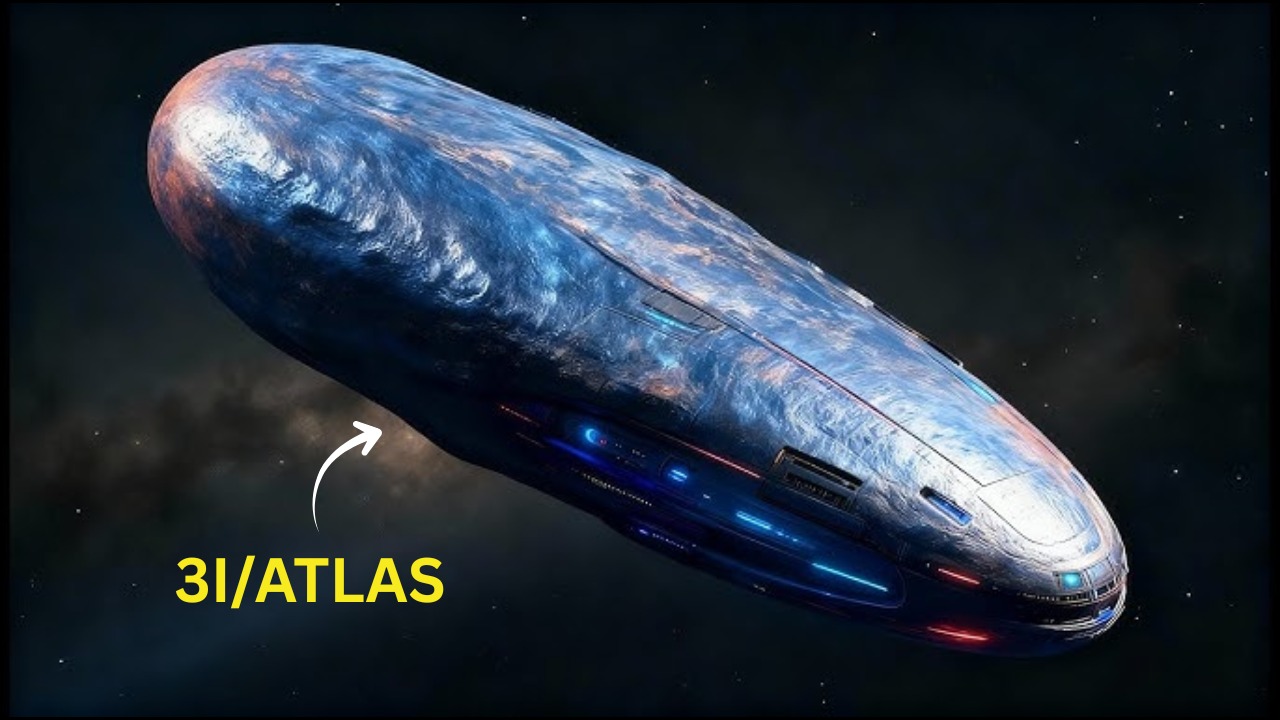Astronomers around the world are stunned after the discovery of a new interstellar object — officially designated 3I/ATLAS — that has entered our solar system from beyond the stars. This mysterious visitor, detected by the Asteroid Terrestrial-impact Last Alert System (ATLAS, marks only the third known interstellar object ever observed. Its unexpected appearance has sparked excitement, debate, and curiosity among NASA scientists and the global astronomy community, as it could provide rare clues about materials and origins from other planetary systems.
Overview (Quick Table)
| Key Aspect | Details |
|---|---|
| Object Name | 3I/ATLAS |
| Discovery Date | 2025 |
| Discovered By | ATLAS (Asteroid Terrestrial-impact Last Alert System) |
| Type | Interstellar Object (Comet-like body) |
| Origin | Outside our Solar System |
| Significance | Third interstellar object detected after 1I/‘Oumuamua and 2I/Borisov |
| Observing Agencies | NASA, ESA, and international observatories |
| Current Status | Approaching inner Solar System for a brief visit |
What is 3I/ATLAS?
3I/ATLAS is a newly identified interstellar body traveling at immense speeds through the solar system. Unlike asteroids or comets that orbit the Sun, this object’s hyperbolic trajectory confirms it originated beyond the gravitational influence of our Sun, making it a true interstellar traveler. Early analysis suggests it may be a fragment of an ancient planetary system that was ejected millions or even billions of years ago.
Its brightness and trajectory patterns show it’s not a typical comet, though it emits a faint coma (a glowing cloud of dust and gas). Researchers believe it may carry unusual isotopes or frozen elements unseen in our solar system before.
Previous Interstellar Visitors
Before 3I/ATLAS, only two interstellar objects were confirmed:
- 1I/‘Oumuamua (2017): The first known interstellar visitor, cigar-shaped and unusually reflective, sparking debates about its nature — natural rock or alien probe.
- 2I/Borisov (2019): A comet-like object with a distinct tail, resembling traditional solar system comets but chemically different.
The arrival of 3I/ATLAS now provides a third opportunity to study these cosmic messengers and compare their traits.
Scientific Importance of the Discovery
NASA and other agencies have called 3I/ATLAS one of the most significant celestial findings of the decade. Here’s why:
- Interstellar Chemistry:
The object’s composition could reveal chemical fingerprints of other star systems, expanding our understanding of how planets and life-supporting materials form. - Clues to Cosmic Travel:
Its extreme velocity and orbit pattern might help researchers understand how material gets ejected from forming planetary systems and travels across galaxies. - Origins of Organic Material:
If 3I/ATLAS carries organic compounds, it could hint that the building blocks of life are widespread across the universe.
NASA’s Ongoing Observations
NASA’s Jet Propulsion Laboratory (JPL), Hubble Space Telescope, and James Webb Space Telescope (JWST) are now monitoring 3I/ATLAS closely. The object is expected to remain observable for only a few months before disappearing into deep space forever.
Spectroscopic data will allow scientists to analyze its surface composition, outgassing behavior, and reflectivity. Early readings suggest a mix of icy materials, silicate dust, and possible exotic metals, unlike those typically found in solar system comets.
Potential Theories About Its Origin
Astronomers have proposed several hypotheses about where 3I/ATLAS came from:
- Ejection from a Binary Star System: It might have been flung out by strong gravitational interactions between two stars.
- Remnant of a Collapsed Planetary Disk: Possibly debris from a young, collapsing planetary system.
- Galactic Wanderer: Some speculate it could be billions of years old, wandering interstellar space since before our solar system even formed.
Each theory highlights how such rare visitors serve as time capsules from faraway cosmic regions.
Public and Scientific Reaction
The discovery has captivated both scientists and the public. Social media is abuzz with speculation, from “alien probes” to “cosmic relics.”
NASA scientists, however, emphasize a more grounded excitement — the object’s natural origin and scientific potential are more extraordinary than any fictional explanation.
Dr. Karen Meech, a leading astronomer involved in interstellar research, noted that “3I/ATLAS is a once-in-a-lifetime opportunity to study another star system’s debris up close — a cosmic postcard from another world.”
Why the Name ‘ATLAS’?
The object was detected using the ATLAS survey system in Hawaii — a NASA-funded project designed to identify objects that could pose potential impact threats to Earth. Ironically, its purpose led to discovering not danger, but an interstellar marvel racing through our cosmic neighborhood.
What Happens Next?
3I/ATLAS will continue its journey through the inner solar system for several months before exiting back into interstellar space. Astronomers are racing to collect as much data as possible before it fades beyond telescope range.
There are discussions about potential future missions to intercept interstellar visitors using rapid-response spacecraft, but such efforts remain in early planning stages.
Final Takeaway
The discovery of 3I/ATLAS is a reminder of how dynamic and interconnected our universe is. Every interstellar object that passes through our solar system gives humanity a rare glimpse into distant cosmic origins. While it may never return, its brief visit deepens our understanding of how matter, planets, and possibly life itself travel across galaxies.
FAQs
Q1. What makes 3I/ATLAS unique?
It’s only the third confirmed interstellar object to ever pass through our solar system, originating from outside our Sun’s gravitational pull.
Q2. Can 3I/ATLAS hit Earth?
No. Its trajectory shows no risk of impact — it will pass safely through and continue into deep space.
Q3. Will NASA send a probe to study it?
Not for 3I/ATLAS, as it’s moving too fast, but future missions are being designed to intercept similar interstellar visitors.
Official Source: NASA’s Official Website

